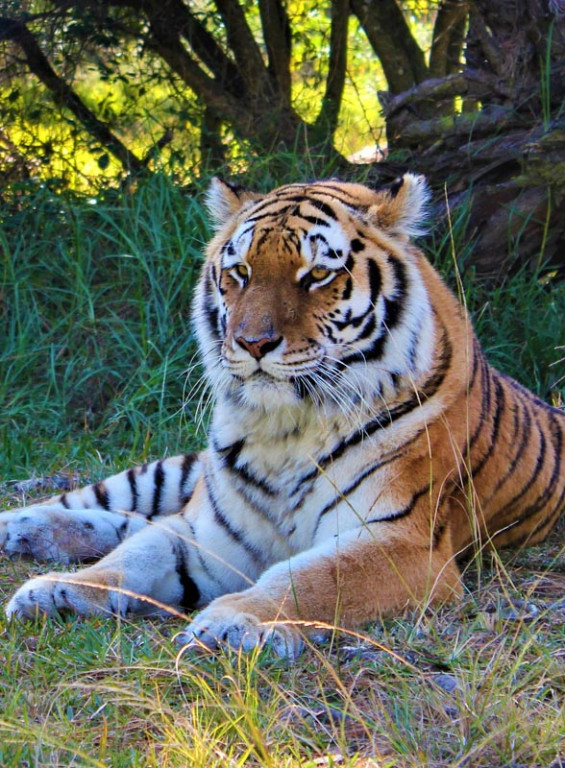The Siberian tiger - Panthera Tigris Altaica - also known as the Amur tiger. They are found in the in the Russian Far East – Siberia – Hence the name. Known to have a much colder climate the Siberian Tiger have adaptations that enable them to withstand this colder climate. They have, as example, a specialized layer of fat under their skin that helps insulate them from the cold. This layer, known as subcutaneous fat, can be up to 4 centimeters (about 1.5 inches) thick. It not only provides thermal insulation but also serves as an energy reserve during the harsh winter months when prey might be scarce. This adaptation helps Siberian tigers survive and remain active in their frigid habitat.
They are paler and with less stripes than Bengal Tigers. Their stripes are narrower and spaced further apart. The chest, belly and inner parts of its limbs are white.
An interesting fact is that the skin has stripes and even if you would shave all the fur off a tiger, the stripes will still be visible.
A dead give-away between the Bengals and the Siberians is to look at the amount of fur around the neck. The Siberian Tigers have thicker fur around the neck.
The Siberian Tiger is the largest cat species in the world. In the wild and when needed the Siberian Tiger can jump to a height of 5 meters and a length of 10m.
Exceptionally strong, they can run whilst holding prey of up to 100 kilograms in their mouths.
The existence of White Siberian Tigers has not been documented. With an estimate of about 500 odd Siberian tigers living in the wild, there are probably more Siberian tigers living in captivity than what there are in the wild.
Siberian tigers have an unusual trait in their reproductive behaviour: their mating calls are distinctively different from those of other tiger subspecies. Unlike other tigers, Siberian tigers produce a unique “growl” or “roar” during mating that is adapted to their cold, expansive habitat. This sound is less of a roar and more of a deep, resonant growl that travels well over long distances in the snowy forests of Siberia.



